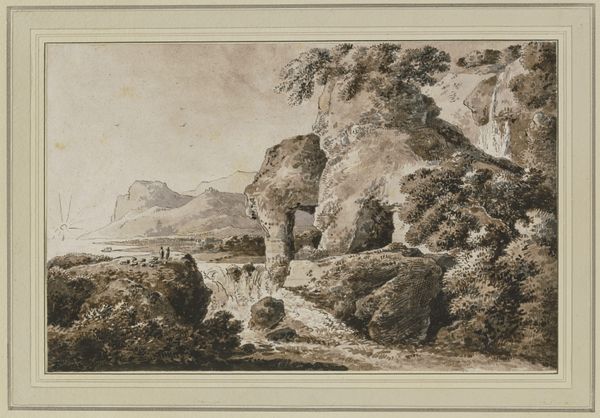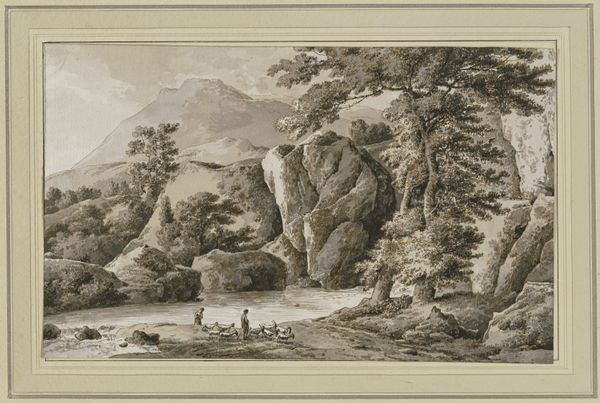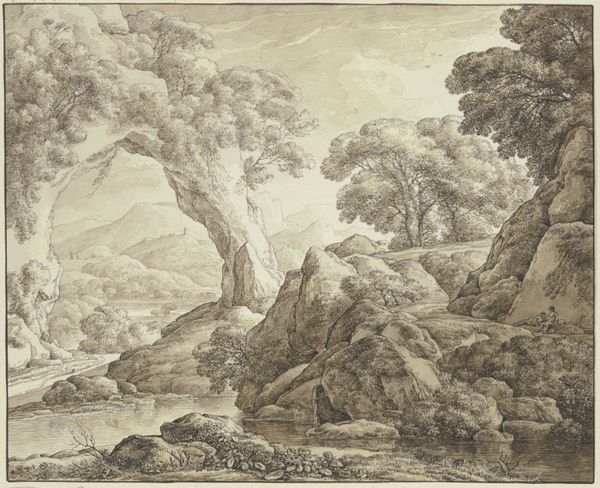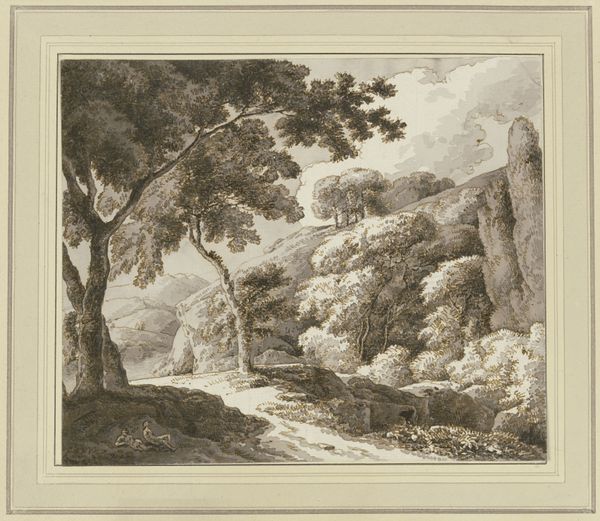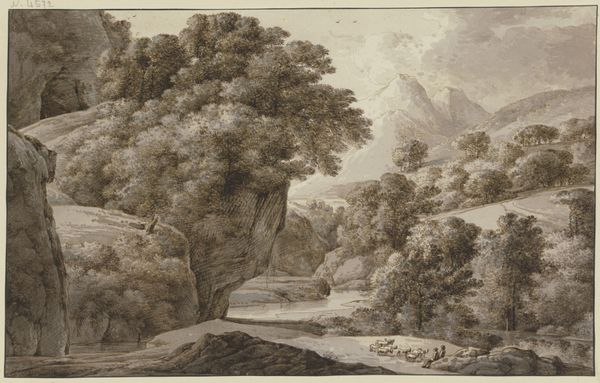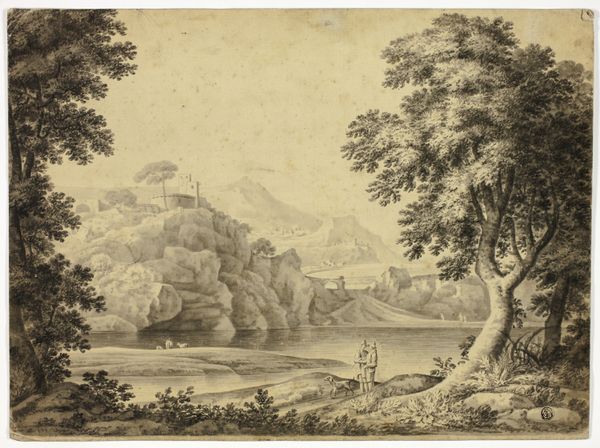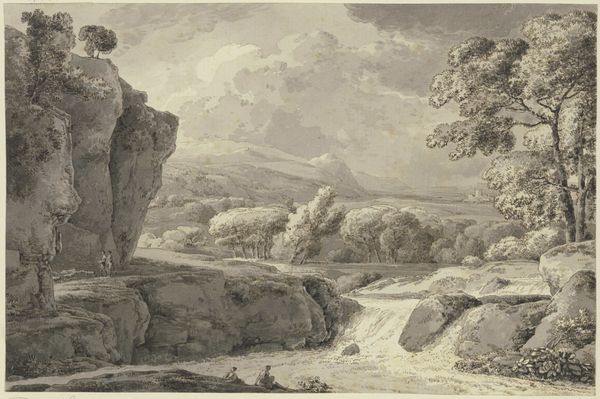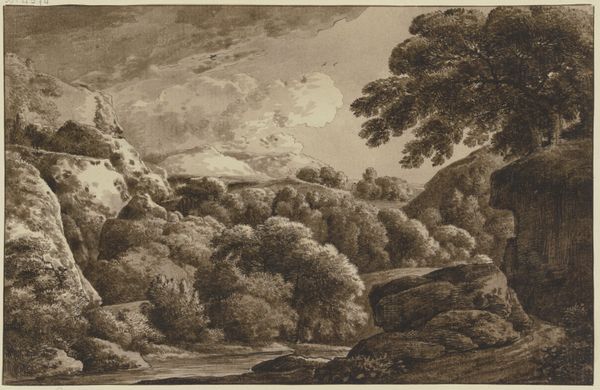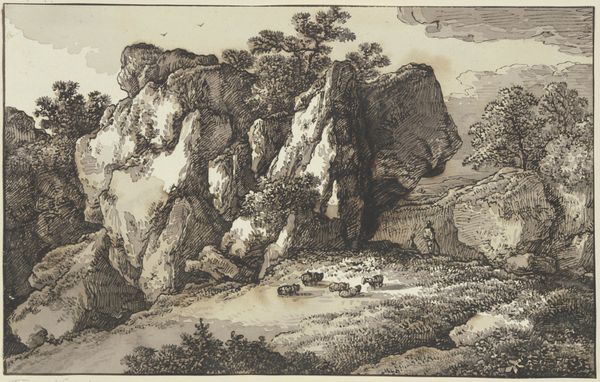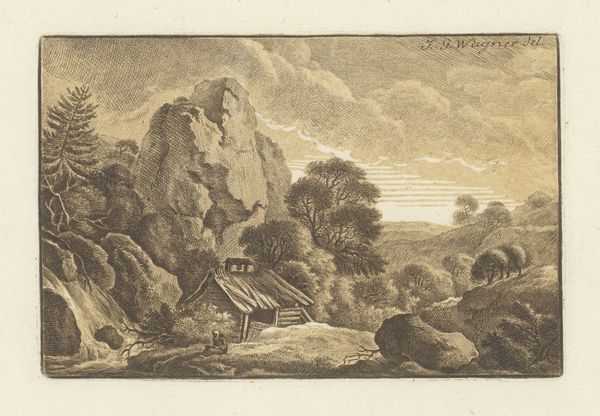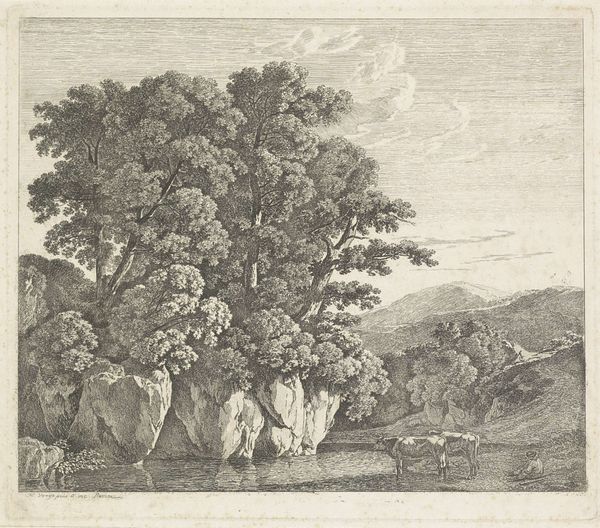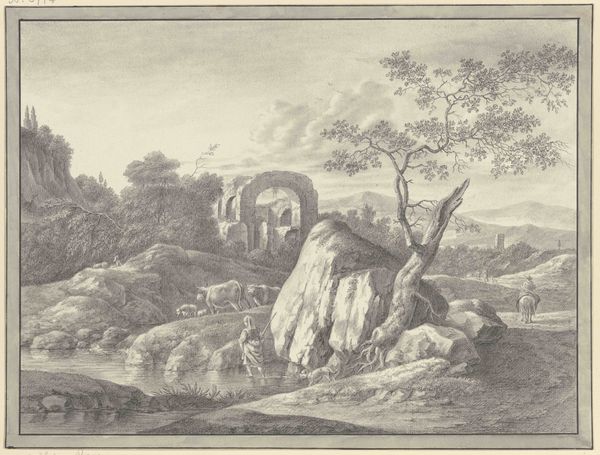
drawing, etching, dry-media, ink, pencil, pen
#
drawing
#
etching
#
sculpture
#
landscape
#
charcoal drawing
#
dry-media
#
ink
#
romanticism
#
pencil
#
15_18th-century
#
pen
Copyright: Public Domain
Editor: This is "Landschaft mit Felsentor an einem Wasserfall," a landscape by Franz Kobell, using ink, pencil, and etching techniques from the 18th century. It's such a beautifully rendered scene; the landscape and its geological feature has a calming, grounding effect. What aspects of the drawing strike you the most? Curator: The materiality of the work is crucial here. Consider the interplay between the artist’s hand, the landscape itself, and the societal consumption of such imagery. The delicate use of ink and pencil elevates the landscape from a mere scene to a carefully constructed object. Editor: I see what you mean, but I guess I see the scene as more sublime. Curator: Sublimity has to be considered beyond aesthetics. How did the accessibility to materials, like the imported inks or fine pencils, reflect societal structures? Who commissioned and consumed landscapes like these? These details become clues to unlock its meaning. Do you think the availability of particular drawing styles or print-making techniques influenced his work? Editor: That's a fascinating way to contextualize it; how materials and market forces can almost dictate what we think of as beautiful. The artist can only sell what buyers will buy! So, if landscape scenes were in demand, that impacts the techniques they use. Curator: Exactly! This challenges a romanticized view of the artist as solely driven by inner vision. Their work is inseparable from economic and material realities. Editor: It does change my perspective. Now I see this work more as an artifact of its time, embedded in the means of its production. Thanks for the different lens to see it. Curator: Indeed, it gives one a whole new way to consider the cultural implications of materials in art!
Comments
No comments
Be the first to comment and join the conversation on the ultimate creative platform.
